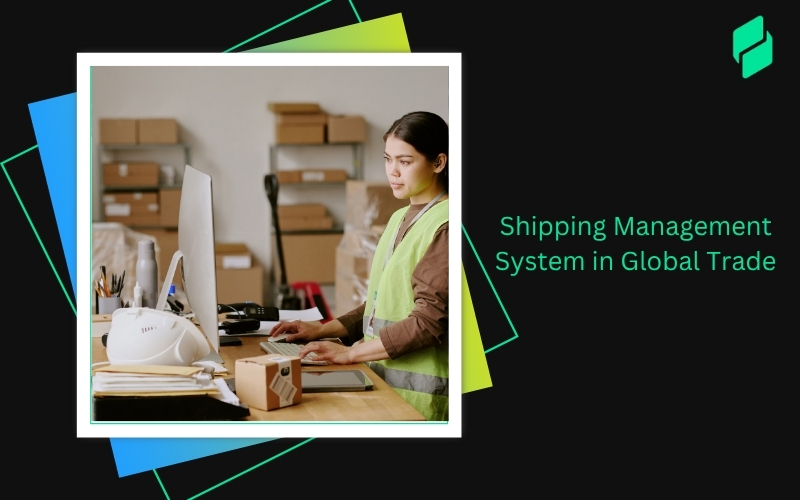Optimize your business: use unlimited savings with Pazago fulfilled now!
Get Started ->Have you ever marveled at the giant metal boxes stacked on ships, trains, and trucks while traveling globally? Those are shipping containers, pivotal in the smooth operation of global trade.
But not all containers are the same. Today, let's dive into SOC containers (Shipper-Owned Containers) and discover how they differ from the more common COC (Carrier-Owned Container) and why you might consider owning one.
What Exactly Are SOC Containers?
It is a shipping container owned by the shipper rather than the shipping line. This distinction means you're not just renting space on a ship; you own the container where your goods travel.
Ownership brings many benefits, including cost savings on demurrage and detention fees, which can quickly add up when using Carrier-Owned Containers (COCs).
Understanding COC: Carrier-Owned Container
In contrast to a SOC, the carrier provides a Carrier-Owned Container (COC) for the shipper to use during transport. Ownership remains with the shipping line, and the shipper pays for its use.
This arrangement is standard in the industry, especially for businesses that need to ship more frequently to justify owning their containers.
While COCs offer convenience, they also have less control over the shipping process and potential additional costs, such as higher fees during peak times.
Also Read: Common Types of Containers for Shipping
Advantages
Imagine the freedom of having your very own shipping container, ready to go whenever you need it, wherever you need it.
Let's explore the benefits of owning It and how it could revolutionize your logistics strategy.
1. Flexibility and Replacement Ease
Owning It puts you in the driver's seat. You decide when and where to use your container without waiting on the availability of a COC (Carrier-Owned Container). Need to make a last-minute shipment or a unique configuration for your goods? No problem.
It is always ready for action, significantly simplifying logistics planning. Plus, if it ever gets damaged, replacing or repairing it is entirely up to you—there is no need to rely on a carrier's timetable.
2. Ensuring Container Availability
With It, you cut out the middleman. You don't need to coordinate with a shipping line for container availability, which can be incredibly challenging during peak seasons.
This autonomy speeds up your supply chain and makes it more reliable. Faster shipping times mean happier customers and a more robust bottom line.
3. Avoiding Detention and Demurrage Fees
One of its most palpable benefits is avoiding the dreaded detention and demurrage fees. These charges are incurred when a COC is not returned to the port within the allotted free time.
With a SOC, the container is yours. You can keep it as long as necessary without worrying about extra fees, providing substantial cost savings.
Also Read:
4. Cost-Effective Shipping to Remote Locations
Finally, SOC containers offer a significant advantage when shipping to less accessible locations. With COCs, you might face higher rates due to the lower availability of containers in these areas.
It ensures you can ship to remote locations and at more reasonable rates. This capability can open up new markets and opportunities for your business, helping you expand your reach without increasing shipping costs.
Looking to maximize these benefits without the hassle? Pazago offers comprehensive management services that can streamline your international trading operations.
Also Read: What Is A Reefer Container? Dimensions & Complete Guide
Disadvantages and Challenges
While owning It offers undeniable perks, it also has challenges. Understanding these potential pitfalls can help you navigate the complex shipping and logistics landscape more effectively.
Let's unpack some hurdles you might face when opting for It.
1. Navigating Customs with SOC Container Prefixes
Did you know that not all container prefixes are recognized equally by customs worldwide? This can be a significant roadblock.
Specific SOC container prefixes might face delays or additional scrutiny during customs clearance. If you own it, you must understand and mitigate these issues.
2. Managing SOC Container Numbers
Owning means taking charge of its identification, too. Unlike COCs, where the carrier manages container numbers, SOC owners must maintain and potentially update their container numbers to comply with international shipping standards. This added administrative duty can be cumbersome.
3. The Responsibility of Maintenance
Finally, let's talk about maintenance. Every container, whether SOC or COC, must be in top condition to transport goods safely across the globe. As a SOC owner, you ensure that your container meets all safety and quality standards.
This means regular maintenance checks, timely repairs, and meeting certification requirements. Are you ready to handle these additional responsibilities?
Mitigate these challenges with Pazago's fully managed platform, designed to handle the intricacies of international trade and ensure your operations remain smooth and efficient.
Also Read: What Is NVOCC? Importance In Shipping Industry
SOC Containers Vs. COC Containers
When navigating the complex world of global shipping, the choice between SOC (Shipper-Owned Container) and COC (Carrier-Owned Container) can significantly impact your logistics strategy. Each option offers unique benefits and challenges that can align differently with your specific shipping needs.
Let's break down these differences to help you decide which container type fits your business best.
With Pazago, you gain the flexibility of such containers and the operational simplicity of COCs, making it easier to manage your international shipments.
Also Read: Differences and Comparisons: Carriers and Shippers
Current Market Prices for SOC Containers in India
Curious about the cost of purchasing SOC containers in India? Let's break down the current market prices and the factors affecting them.
Typical Price Range
In India, the prices for Shipper-Owned Containers (SOC) can vary depending on their condition and size:
20-foot SOC Containers
- New: INR 2,82,000 - INR 3,00,000
- Cargo-Worthy Used: INR 1,58,000 - INR 1,75,000
40-foot SOC Containers
- New: INR 3,36,000 - INR 3,60,000
- Cargo-Worthy Used: INR 2,45,000 - INR 2,65,000
// These Prices are variable and subject to change. //
Factors Influencing Prices
- Condition: New containers are more expensive than used ones, but used containers still in good condition offer significant savings.
- Location: Prices can vary based on the location and demand in different regions of India. Significant ports like Nhava Sheva, Chennai, and Mundra might have different pricing structures.
- Time of Year: Similar to global trends, prices fluctuate based on the season and market demand.
Additional Costs
When purchasing SOC containers, consider these additional costs:
- Maintenance and Repairs: As an owner, you are responsible for maintaining the container.
- Transportation: Costs associated with transporting the container to your location.
- Customs and Regulatory Fees: Depending on the shipping routes, you might incur additional customs duties and fees.
To Buy or Not to Buy
Deciding whether to purchase or lease can significantly impact your operations if you're involved in international trade, logistics, or supply chain management.
But what are the practical considerations here?
- Flexibility: Ownership allows you to use the container without time constraints, unlike leased or carrier-owned units, which must be returned.
- Cost: Initially, purchasing was more expensive. However, owning a container can be more cost-effective in the long run if you're shipping goods frequently. There are no leasing fees and no demurrage charges when delays occur.
- Availability: During peak shipping seasons, finding available COCs can be challenging. Owning a SOC ensures that you always have a container, facilitating better planning and reducing dependency on carrier timelines.
Making the Choice
So, should you invest in owning It? It depends. If your business has regular and ongoing shipping needs, investing in a SOC can provide cost savings and operational control.
However, leasing might be the safer bet if your shipping needs are sporadic or you need clarification on the future scale of your operations.
Deciding on such containers requires careful consideration. Let Pazago help you evaluate your business needs to make the most cost-effective and efficient decision.
Also Read: Understanding Domestic Logistics and Transportation Management
Practical Uses
Did you know that SOC containers aren't just for shipping your products from point A to point B? They're versatile tools that can solve many logistical challenges, making them a vital asset in today's complex supply chains.
Let's explore some practical and innovative uses of SOC containers that could evolve your thinking about shipping and storage.
1. Leasing SOC Containers for One-Way Trips
Imagine shipping to a remote destination. Would you want to pay for returning an empty container to its origin? With SOC containers, you can lease them out for one-way trips.
This approach saves on costs and increases efficiency by avoiding the hassle of managing empty returns. Have you ever paid extra just to send an empty container back?
2. SOC Containers in Project Cargo
Project cargo involves transporting large, heavy, or high-value equipment that standard containers cannot handle. Such containers are perfect for these tasks.
Their versatility allows modification to accommodate irregular sizes and weights, providing a secure and custom fit for your valuable cargo. Have you ever needed a tailored solution for an oversized shipment?
3. Addressing Container Shortages and Temporary Storage
In recent years, container shortages have become a significant challenge in the shipping industry. Such containers offer a solution by reducing reliance on carrier-owned units.
They can also double as temporary storage units during peak times or when warehouse space is at a premium. This dual functionality makes such containers invaluable during logistical crunches.
Discover how Pazago can enhance these use cases with our end-to-end trade fulfillment services, empowering your business to leverage such containers' full potential.
Also Read: What Is Fleet Management In Logistics?
Identification of Shipper-Owned Containers (SOC)
Navigating the complex field of global shipping requires attention to many details, including correctly identifying your containers.
Let’s break down how the unique alphanumeric codes assigned to each container play a crucial role in logistics and international trade.
The Structure of Container Numbers
A distinct combination of letters and numbers marks each such container. This sequence includes four letters followed by seven numbers:
- Owner Prefix (First Three Letters): This prefix identifies the container's owner, which is crucial for handling and tracking.
- Equipment Identifier (Fourth Letter): Denotes the type of container; for instance, 'U' stands for an intermodal container.
- Serial Number (Next Six Digits): Each container is assigned a unique number.
- Check Digit (Last Digit): Used for verifying the accuracy of the container number.
Example of a Container Number:
Consider the container number MSKU9342870:
- MSK - Owner Prefix indicates Maersk owns the container.
- U - Equipment Identifier indicates it’s an intermodal container.
- 934287 - The serial number is unique to this specific container.
- 0 - Check Digit, which is used to confirm the accuracy of the total number.
Importance of Accurate Container Numbers
Each part of the container number sequence is standardized under the guidelines set by the Bureau International des Containers (BIC) and the International Standards Organization (ISO).
Ensuring your container numbers comply with these standards is essential for smooth international shipping operations.
Managing Ownership and Registration Changes
When a container becomes a SOC, its original number might need updating, mainly the first three letters representing the ownership code. To update these:
- Registration with BIC: Obtain a new prefix by registering with the BIC.
- Avoid Generic Prefixes: Although prefixes like 'XXXU' or 'NONU' are used, they may not be recognized by the customs of certain countries, leading to potential shipping delays.
Also Read: Guide on Calculating Ocean Freight Transit Times
Neutralizing SOC Containers For Use
Did you know that a container needs to be neutralized before it can be used as a SOC? This step is crucial for compliance and control.
Neutralizing your SOC containers prevents any issues related to ownership and ensures that your containers are recognized as yours by customs and other authorities. This step is vital for maintaining control and avoiding any legal complications.
Steps to Neutralize a SOC Container:
- Remove Previous Branding: Ensure all previous logos and marks are entirely removed.
- Rebrand as Necessary: Add your branding if needed, ensuring the container is identified as yours.
- Update Documentation: Ensure all paperwork reflects the container's new ownership to avoid any confusion during transport.
Also Read: Understanding the Importance and Use of e-BRC in Export Business
Conclusion
In conclusion, SOC containers offer significant control and cost reduction opportunities for shippers, enhancing flexibility and economic benefits in logistics. As you consider your shipping needs, remember the importance of selecting the right container type.
Embracing such containers can transform your supply chain processes, giving you autonomy and efficiency. Consider how these containers could align with your logistical strategies and propel your business forward in the competitive world of global trade.
As you contemplate enhancing your supply chain with such containers, consider how Pazago's comprehensive trade management services can further streamline your operations and boost your global trade success.
Frequently Asked Questions About SOC Containers
1. Can SOC containers be used for purposes other than shipping?
Yes, SOC containers can be used for storage, as portable offices, workshops, and even for living spaces. Their sturdy design makes them versatile for many applications.
2. What certifications are required for SOC containers?
SOC containers must meet international standards, such as ISO certifications, and may require Container Safety Convention (CSC) certification for safe transport.
3. Are there financing options available for purchasing SOC containers?
You can finance SOC containers through leasing, hire purchase agreements, or loans from banks and suppliers.
4. How does the leasing of SOC containers work?
Leasing means renting a container for a set period. The leasing company usually handles maintenance, and you pay a regular fee.
5. What maintenance practices are recommended for SOC containers?
Essential maintenance practices include regular checks for rust and damage, cleaning, repainting, and ensuring door seals are intact.
6. Can SOC containers be customized?
Yes, SOC containers can be modified with windows, doors, insulation, and other features to suit different needs, like offices or retail spaces.
7. How does insurance for SOC containers work?
Insurance covers damage, theft, and liability during transit. Choosing a policy that covers both the container and its contents is important.
8. What is a SOC slot?
A SOC slot is a reserved vessel, truck, or train space allocated explicitly for a Shipper-Owned Container. This slot ensures that your container has a designated place during transport.
9. What is a SOC container certificate?
A SOC container certificate is a document that verifies that the container meets all safety and regulatory standards. This certificate is necessary for international shipping and ensures the container is seaworthy and compliant with industry regulations.


.png)








